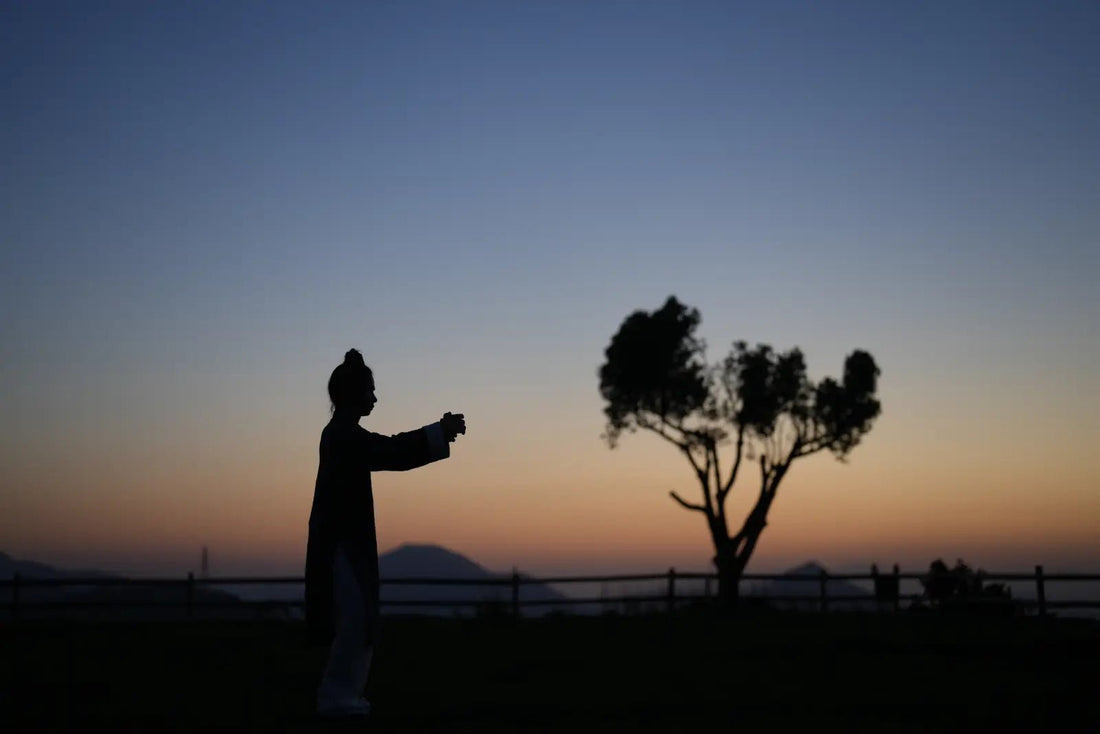
Unlocking the Secrets of Wudang Tai Chi
Share
Often when people hear "Tai Chi," they think of a single, slow-moving form. But in Wudang, a place revered as the birthplace of Tai Chi, it's so much more. Wudang Tai Chi is not just one martial art—it's a complete system that combines different levels of martial arts and Qigong, including Tai Chi, Liang Yi, and Wuji.
This system is a comprehensive practice that integrates the external with the internal, movement with stillness, and beginner to advanced levels. It’s a journey of self-cultivation for both body and mind, as an old saying goes: "Tai Chi must be practiced with perseverance."
So, what makes up this unique system? Wudang Tai Chi primarily includes Tai Chi Quan, Tai Chi Sword, Liang Yi Quan, and Wuji Gong.

Tai Chi Quan (Tai Chi Fist)
Wudang Tai Chi Quan harmonizes internal Qi with external form. The body and spirit are perfectly integrated, making it a sublime practice for both martial arts and health. The forms range from the classic Thirteen Forms of Zhang Sanfeng to the modern 28- and 108-Form sets. As the Tai Chi manual says:
"Tai Chi is connected by intention, each move carefully researched.
Holding the central balance, Wuji has no form, nurturing true vitality.
The Great Void creates Taiji, where Yin and Yang come into motion to form the fist."
Tai Chi Sword
Tai Chi Sword is a unique Wudang skill. The sword can be an extension of your body, moving fluidly, regardless of its weight. This art has been passed down through generations. Tai Chi Sword combines the flowing, continuous movement of Tai Chi Quan with the grace and precision of swordplay, making it a beautiful and elegant martial form.

Liang Yi Quan (Two-Form Fist)
Also known as Xuan Wu Quan, Liang Yi Quan is a core practice for developing the explosive and rebounding force of internal martial arts. The style blends fast and slow movements, as well as hard and soft techniques. It embodies the principles of "moving like a dragon, sitting like a tiger, flashing like lightning, and striking like thunder." The philosophy is to overcome hardness with softness and to strike after the opponent moves. As the Daoist saying goes, "Yin and Yang harmonize into Taiji, and when separated, they become Liang Yi."
Wuji Gong (Wuji Cultivation)
Wuji Gong is a static, Daoist internal cultivation method that refines the body's Jing (Essence), Qi (Vitality), and Shen (Spirit). Its purpose is to open the meridians, prolong life, unlock potential, and cultivate wisdom. It is considered the highest level of Tai Chi practice.
The Wuji Gong practice includes:
- Daoist Bone-Strengthening Qigong
- Dantian Breathing and Qi-Gathering Stance
- Tai Chi Guiding Force Stance
- Daoist Active and Still Qigong for Health
- Meditation
When you practice the entire Wudang Tai Chi system—Liang Yi to strengthen your body, Wuji to cultivate your foundation, and Tai Chi to harmonize Yin and Yang—your practice becomes like a dragon riding the clouds and a tiger using the wind. These three components are the complete system of Wudang Tai Chi, a secret lineage of Wudang martial arts.


